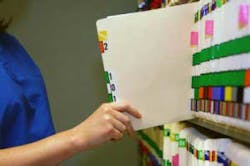The gift of an extra year before cross coding and ICD-10 implementation
We’ve been given a reprieve. Medical and dental practices have been on track for the implementation of ICD-10, which is the diagnosis code set to replace ICD-9. This code revision is extensive due to ICD-9’s 14,000 codes and ICD-10’s 69,000 codes. On March 31, 2014, the legislature issued a delay in its implementation until at least Oct. 1, 2015. The advantage of this is that we now have at least one more year to prepare.
Those who are affected the most by this change to ICD-10 are the large providers such as hospitals and big clinics. Small practices don’t have nearly as many new codes to familiarize themselves with. These large institutions often have diverse departments that don’t always communicate well with each other. Due to this, what one doctor documents may not always be coded exactly as intended. Small practices tend to have much better communication, which makes coding simpler.
In either case, training will be required to understand the new dynamics of this code set. There are resources available. This extra year will provide the time needed to learn how to implement ICD-10 accurately.
For dental practices, I suggest that both the dentists and the coding staff become familiar with the code set, but there’s no need to become familiar with all 69,000 codes. My suggestion is to find those codes that pertain to the procedures most commonly performed in the practice. These can be entered in a template format. Templates such as these can be called encounter forms or charge slips, and such forms are used in many medical practices. You may have noticed that when you have an appointment with your primary care provider, there is a paper encounter form with a lot of codes on it. It obviously doesn’t have 14,000 codes on it. The practice has chosen their most commonly used codes for the form.
Encounter forms take care of most communication problems because the dentist checks off codes on the form. The form is then used for check out and insurance processing. It is a very efficient part of implementing cross coding. Some practices that cross code for multiple types of dental procedures might want to have separate forms for the various procedures so that the forms are not too long. This can make its use easier and more efficient in the long run. Business office staff simply need to print out the appropriate one for each patient based on the treatment plan, the dentist can check off the diagnosis and procedure codes, and the business office will use the form to check out the patient and bill insurance.
Physicians are a step ahead of dentists. Understanding the use of diagnosis codes and being familiar with the codes that pertain to their practice are requirements for physicians. Diagnosis codes address why a procedure is medically necessary, and medical claims will not be paid without that. Because dental insurance carriers have not required the use of diagnosis codes, dentists have not had to be concerned with providing that proof for procedures they perform.
Times are changing, as can be seen by the new ADA claim form, which now has entry boxes for diagnosis codes. Entering diagnosis codes on the dental claim form is not mandatory yet, but will be at some point in the future. Therefore, dentists need to become familiar with them even if they don’t cross code to medical. For those dentists who do cross code and for those who are considering implementation of cross coding, it is vitally important that they follow the example of the physicians and become familiar with the medical diagnosis code set. In addition, diagnoses must be part of each patient’s documentation. Learning about ICD-9 will be good preparation for the eventual implementation of ICD-10. Keep in mind that most business office team members do not have the clinical knowledge to choose diagnosis codes. The determination of accurate diagnoses for patients is the responsibility of the dentist, and it is vitally important for successful claims and avoiding audits.
The full team needs to embark on a training program to learn about both ICD-9 and ICD-10 diagnosis code sets. Also, dental practices should develop their own encounter forms or access pre-defined encounter forms such as those available at my website at artofpracticemanagement.com. Make good use of this year. You will be glad that you did!
Marianne Harper is the CEO of The Art of Practice Management. Her areas of expertise are revenue and collection systems, business office systems, and training dental practices in dental-medical cross coding. Marianne is a well respected consultant, trainer, lecturer, and author. To contact her for a consultation or to invite her to speak to your organization, call 252-637-6259 or email [email protected], or visit her website, www.artofpracticemanagement.com.


